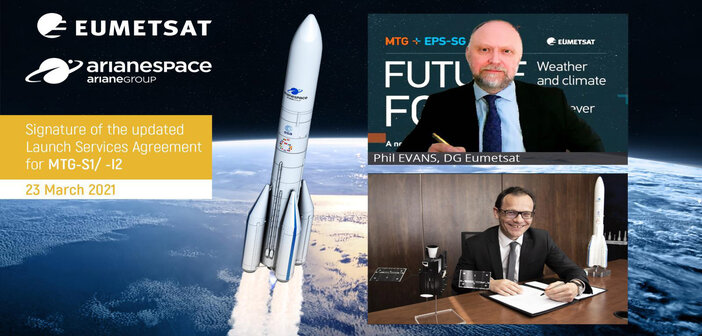EUMETSAT and Arianespace, a leading satellite launch company, have updated their agreement to launch two satellites from the Meteosat Third Generation (MTG) satellites system with the next generation of Ariane launchers, Ariane 6.
The sounder satellite MTG- S1 should be put into orbit in the first half of 2024, while the imager satellite MTG-I2 should be launched no earlier than the second half of 2025, according to EUMETSAT.
Both satellites will then remain in the same geostationary position, 36,000km above Earth for 8.5 years, continuously informing weather forecasters, climate scientists, and other meteorological data users about Earth’s physico-chemical parameters.
According to EUMETSAT, the MTG satellites form the most complex and innovative meteorological geostationary system ever developed. They will provide 4D weather monitoring capability, taking over from the current Meteosat Second Generation satellites to ensure the enhanced continuity of meteorological data.
Phil Evans, director-general of EUMETSAT, said, “The MTG fleet is expected to greatly improve the timeliness and the accuracy of the weather predictions issued by the national meteorological and hydrological services in our member states and our other users. The imager on MTG-I2, in particular, will enable real-time nowcasting of extreme weather events, such as storms, with such precision that we expect it to literally save lives.”
Stéphane Israël, CEO of Arianespace, added, “Last year, EUMETSAT already demonstrated its confidence in the next generation of European launchers with its signature of the joint statement on the institutional exploitation of Ariane 6 and Vega C. The update of our agreement is a new milestone in our partnership that already placed into orbit 13 satellites operated by EUMETSAT.”
The Meteosat Third Generation (MTG) meteorological system will comprise four imager satellites (MTG –I1 to –I4) and three sounder satellites (MTG – S1 to S3), which will be launched from 2022 for MTG-I1 and 2033 for MTG-I4.
The MTG imager satellites will provide very high resolution images of clouds and lightning over Europe every 2.5 minutes. Data will be complemented by the worldwide first operational infrared sounder in a geostationary orbit on board the MTG sounder satellites, providing data on the nature and concentration of aerosols and pollutants such as ozone or nitrogen dioxide in the atmosphere, and on vertical profiles of air temperature and moisture.
The data provided by the MTG satellites will be made accessible to users in near-real time via the new data services currently being developed at EUMETSAT. This new generation of cloud-based services will provide the users of its data with easier access to the information they need, and to more powerful tools to work with it.



